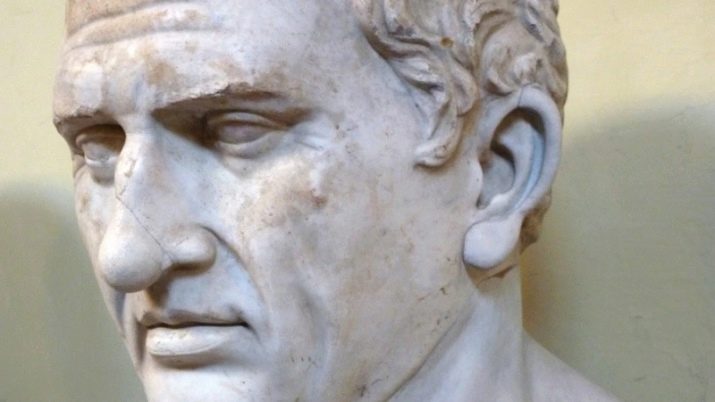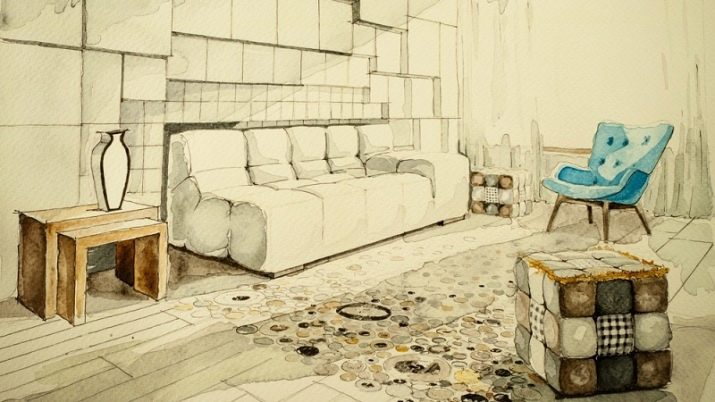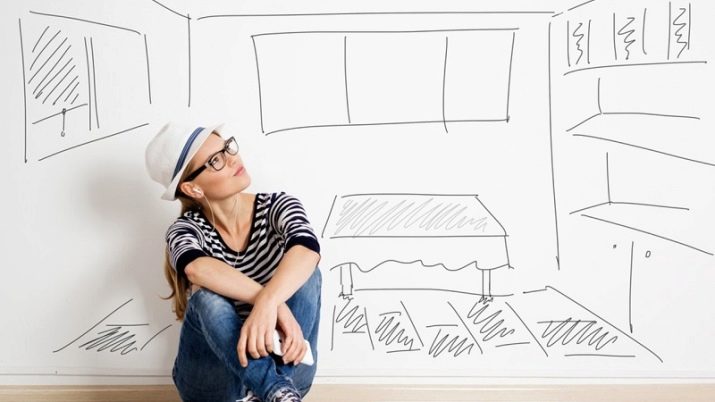In order to know a lot, you need to read and remember a lot. But not everyone can boast a good memory. There are many ways to develop it. One of them is the Cicero method or the “Roman room”.

Method History
One of the most famous statesmen of the Roman Empire, Mark Tullius Cicero, who lived in 106-43 BC, became famous for his unsurpassed oratory talent. Moreover, he possessed an amazing memory, reproducing in his speeches many dates, names, facts, historical events, without using any records.
The way of memorizing the text “Roman room” (Cicero's method) was named in his honor, but it was not invented by him, but much earlier. Cicero only used it to prepare for public speaking and thereby made this method famous. While preparing the speech, Cicero divided it into parts. The rehearsal of each of them took place in different rooms of his large house. Already during the performance, he mentally went around all those rooms in which one or another part of his speech was honed, and it was this technique that allowed him to remember everything to the smallest detail.
The roots of this mnemonics go back to Ancient Greece, where, like Cicero, the poet Simonides successfully used it.. According to legend, once the building collapsed, where a large feast took place. Simonides, who was present there, managed to get out of the wreckage alive and almost unscathed. He recounted from memory to people picking up rubble where each of the guests was at the time of the collapse. This helped relatives find all the bodies of the dead and bury them according to customs.After this incident, Simonides realized that this random discovery was very useful and continued to develop it.
At present, you can hear other names for such a memorization technique. For example, a place method or a room system.

Meaning
Cicero Method Memory Training happens based on spatial imagination. What does it mean? Imagine all those home furnishings and street objects that you constantly see. All these are visual images that form your natural associations at the subconscious level. The connections between these images are formed in our head automatically and do not require work on remembering them.
This fact just determines the Cicero method, the essence of which is based on the principle of remembering the sequence and repeated repetition of images that have long been familiar to us. That is, the information that we need to remember well and then reproduce, we must mentally distribute it to objects that are familiar to us (for example, pieces of furniture in an office, bedroom or living room) in a clearly defined order. When you remember this room, you will easily have the necessary informational picture, and you just have to reproduce it.
The same room can be used to memorize an unlimited number of times. This method makes it possible to remember not just individual words and phrases, but voluminous informative texts. You can use this mnemonics in any conditions, it is important to concentrate and not be distracted by external stimuli. When the time comes for voicing the necessary information, imagine the room in which you worked on memorizing, and the process will go on smoothly.
This method is very useful not only for improving memory, but also for the general development of thinking, as well as the ability to focus on the necessary information and analyze the environment.

How to apply in practice?
The Cicero method includes various exercises. First you need to look with your mind’s eye inside your home or office. If you choose your home for memory training, then mentally distribute the sequence of all its rooms around the perimeter, depending on the layout. For instance:
- hallway;
- restroom;
- bathroom;
- pantry;
- living room;
- canteen;
- kitchen;
- bedroom;
- children’s;
- loggia (or balcony).
Then concentrate on the first room and mentally examine all the objects in it. It is always advisable to do this in one direction, it is better to clockwise.

Then go to the next room in the line and examine it in the same way. And so on.
- If this is your first time using the Cicero method, for starters, focus on only one room. You will move on to the rest later, when you are already well trained. In the meantime, select, for example, the hallway and select several stationary objects in it.
- It is not necessary to use only familiar buildings. Can turn your attention to street objects that you often meet. For example, shops, stops, cafes, schools, kindergartens and other similar places.
- After preparing the "Roman room" in your mind, proceed to placing in it the information that you need to remember. For example, you want to remember a list of goods that you need to buy in a store, and you have chosen a hall for this. When you enter it on the left you see a closet. Put bread and milk on the shelves, and hang potatoes and washing powder on the bar with shoulders. Put tea, sugar and cookies on the bedside table. Etc.
When you enter the store, mentally imagine the hallway with its furniture, and the necessary information will clearly draw in your head. If you need to remember a large amount of information, which is unlikely to fit on the objects of one room, then feel free to go to neighboring rooms.
In order to remember a specific text, prepare for a public speech, work with the Cicero method as follows:
- read the text and understand what it is about;
- break it into several semantic parts;
- remember each of these parts in a separate room of your home;
- then make the whole speech aloud, sequentially reproducing in memory the images of those rooms in which parts of the text were memorized.

Recommendations
Such training is recommended to be carried out regularly., as this will improve such an important tool of consciousness as memory. Thus, you will move forward in your successes, and the result of your activity will go on increasing.
Before you begin to work with storing information, it is better to really go around those rooms that will serve as the “Roman room” for you. Represented objects (for example, furniture) should not be repeated, only the names of these objects (cabinet, table, bedside table, chest of drawers, etc.) can be the same. And the objects themselves should be different (for example, a closet in the hallway and a closet in the bedroom, a table in the kitchen and a table in the office, a nightstand in the nursery and a nightstand in the bedroom). And also it is possible to divide one object into several zones (parts). Say, a chest of drawers can not be considered as one object on which we will "place" units of remembered information, but to divide it by the number of boxes in it.
The sensory organs play a significant role in improving the process of memorization. It is important to connect them to the work and note not only what you see, but also what you feel (for example, smells, tastes) or hear (various sounds). For greater efficiency in applying the Cicero method, units of memorized information should be attached to objects in brightly lit rooms. And you can also change the size of memorized objects or images (for example, imagine a mouse the size of an elephant and vice versa), come up with interesting and moving transitions from image to image, from object to object. For example, imagine a sofa in a brighter color than it actually is, and an adjacent chair rhythmically dancing.
The main advantage of the Roman Room technique is its quick development, which takes place in just a few workouts.












